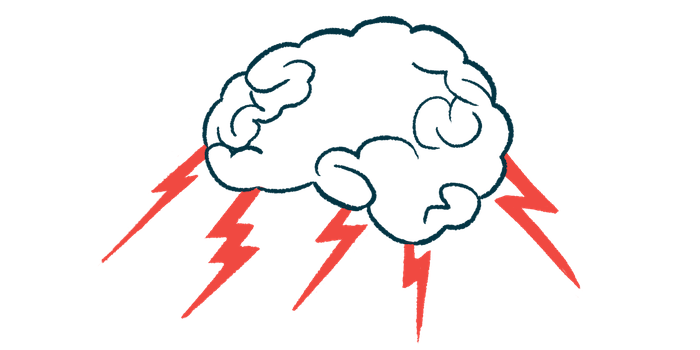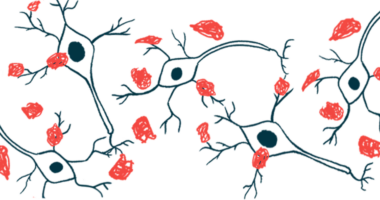Balance of brain motor pathways disrupted in Parkinson’s: Study
Mechanism could be tied to changes in movement, behavior

Depletion of the neurotransmitter dopamine, which occurs in people with Parkinson’s disease, disrupts the balance of motor pathways in the basal ganglia, a group of interconnected structures in the brain that facilitate movement, a study found.
“We found that the relative strength of the two motor pathways switches in Parkinson’s disease,” Aryn Gittis, PhD, study co-lead and a professor of biological sciences at the Neuroscience Institute at Carnegie Mellon University, said in a university news release. “This could be a mechanism by which patients become more immobile in Parkinson’s disease.”
The study, “Dopamine depletion weakens direct pathway modulation of SNr neurons,” was published in the journal Neurobiology of Disease.
Parkinson’s disease is caused by the progressive death of dopaminergic neurons, the nerve cells in the brain that make dopamine, a signaling molecule, or neurotransmitter. These cells are mainly located in a region of the brain called the substantia nigra (SN).
The SN is part of the basal ganglia, a group of independent yet interconnected structures deep in the brain that facilitate and coordinate movement. In addition to the SN, which itself is divided into the SN reticulata (SNr) and the SN compacta, the basal ganglia include the striatum, external globus pallidus (GPe), and the subthalamic nucleus.
Sending signals
There are two pathways in the basal ganglia: the direct pathway that initiates movement and the indirect pathway that reduces movement. Governed by both excitatory and inhibitory signals from neurons, a proper balance of these two pathways ensures smooth bodily movements.
When the body is at rest, inhibitory signals from SNr are continuously sent to the thalamus, a structure at the top of the brain stem that directs most sensory signals from the body to the appropriate regions in the brain. This SNr inhibitory process is thought to prevent unwanted movement while at rest.
In the direct pathway, before initiating movement, excitatory signals are sent from the motor cortex to the striatum, which in turn sends inhibitory signals via a pathway called D1 to the SNr. Suppressing SNr signals releases the blockade of the thalamus, allowing movement to occur. This pathway is modulated by dopamine release, via dopaminergic neurons extending from the SN compact, into the striatum.
In the indirect pathway, excitatory signals are also sent from the cortex to the striatum. Instead, inhibitory signals are rerouted through the GPe and the subthalamic nucleus, which sends signals to the SNr, thus re-establishing the thalamus blockade and stopping movement.
In Parkinson’s, the loss of dopaminergic neurons and the resulting depletion of dopamine are thought to affect basal ganglia signaling at the level of the striatum, leading to movement problems such as tremors, slowness of movement, and rigidity. However, how dopamine loss affects pathways outside of the striatum remains unclear.
“It has long been believed that the changes in the brain associated with Parkinson’s disease, notably the loss of the neurotransmitter dopamine, result in changes in the activity of the input structure of the basal ganglia,” said Jonathan Rubin, PhD, study co-author and professor of mathematics at the University of Pittsburgh, in Pennsylvania.
Studying dopamine depletion in mice
Rubin and long-time collaborator Gittis investigated further using mouse models and electrophysiology, as well as mathematical models, to process the data.
“It was a true collaboration,” Gittis said. “It helped us think a little more outside the box, and it allowed us to look at the entirety of the data.”
The team confirmed that in healthy mice, D1 inputs from the striatum (via the direct pathway) markedly reduced the activity of most SNr neurons, the process associated with initiating movement.
Signal inputs from GPe, part of the indirect pathway to stop movement, also appeared to reduce the activity of SNr neurons, but the signals were significantly weaker than that of the D1 pathway.
Dopamine depletion in mice weakened the D1 pathway and its effect on SNr neuron inhibition, which would make it harder for Parkinson’s patients to initiate movement. Such a reduction in D1-mediated inhibition of the SNr was also accompanied by a decrease in the function of synapses, the gaps that facilitate communication between D1 and SNr neurons.
In contrast, dopamine loss did not affect the weaker inhibitory signals from the GPe to the SNr or affect synaptic function.
Overall, in healthy mice, the D1 pathway had a stronger effect on SNr neurons than GPe stimulation. However, this effect was reversed in dopamine-depleted mice, with GPe signals driving SNr signaling over D1.
That suggests “a physiological mechanism outside of the striatum through which loss of dopamine alters the balance of direct and indirect pathway control of basal ganglia output,” the researchers wrote.
“We discovered and quantified a change in how signals from upstream impact basal ganglia output neurons, which could translate into changes in movement or behavior,” Rubin said.
Gittis and Rubin now plan to focus on these pathways to determine how they respond during natural behavior.
“In future work, we want to leverage these results … to figure out why the described changes occur,” Rubin said. “Another direction … will be to continue to work to find and understand ways that targeted, brief interventions in these pathways can lead to long-lasting changes in activity, which could be really useful for medical treatments.”







